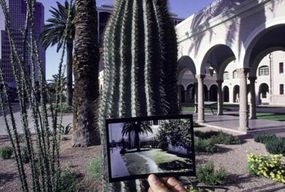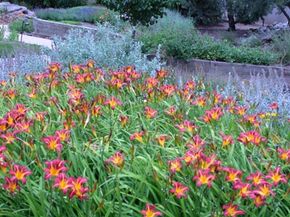What is Xeriscaping?
To begin, we'll look at the word itself: Xeriscape. Pronounced "zeer-i-scape," it's a combination of two Greek words: "xeros" (dry) and "scape" (view). The concept was coined and trademarked by Denver Water, the city of Denver's water department, during a difficult drought period in the late '70s and early '80s.
Xeriscaping is a landscaping philosophy that uses as many native, drought-resistant plants as possible and arranges them in efficient, water-saving ways. With the Environmental Protection Agency's Office of Water predicting that 36 states will experience water shortages by 2013, the idea of Xeriscaping is spreading rapidly to park and gardening center staff as a smart way to save on water [source: EPA].
Advertisement
Despite this, many people don't know what Xeriscaping is. Those who have never heard the name may already know its techniques, because its principles are commonly used in landscaping and often work well. Some people who are aware of the concept mistakenly refer to it as "zero-scape," as in the use of no water. Others have a negative perception of Xeriscaping, thinking that the practice involves the use of barren, rocky landscapes and a few cacti.
As it turns out, Xeriscaping doesn't have to mean a bunch of tumbleweed from the southwest -- because it's open to the use of native plants, a landscaper can select a myriad of plant varieties from his region. A Xeriscaped lawn can look as attractive and colorful as a regular one. If used effectively, the official Denver Water Web site claims Xeriscaping can reduce water use for landscapes by 60 percent or more.

Xeriscaping can also save money on future maintenance. Although it may cost more to plan and convert a current landscape into a Xeriscaped one, the operational costs are much lower. The landscape in the above photo, for instance, cost $14,000 to convert, but in two years it nearly paid for itself -- it saves $6,000 a year in water.
There are seven essential principles to Xeriscaping -- appropriate planning and design, soil improvement, plant selection, practical turf areas, watering, use of mulch and maintenance. We'll talk a little about each one.
To learn about the seven principles of Xeriscaping, read the next page.
